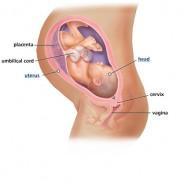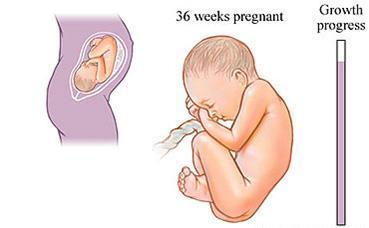
Pregnant at 36 weeks, your baby might start to move down lower in the pelvis, getting ready to be born.
You are in the 36th week of pregnancy with your baby now showing signs of movement and growth while in the fetus. You also experience pain and cramping in your back and abdomen areas.
This might be the sign of the real labor or you are only experiencing the false labor pain as cramps. It becomes very difficult to distinguish between the two types and take quick decision as to whether to call the physician or not.
What is happening to mother and baby?
Baby
Length of the baby is around 13.8 inches and it weighs around 6 pounds. Baby’s head starts shifting towards the pelvis area of yours therefore you will feel the light effect. Your baby will also start to accumulate the fat.
Mother
Vaginal discharge increase up to this time which is a common phenomenon during the last weeks of the pregnancy. If the mucous is tinged with the blood then it is the time of the start of the labor.
Common signs of labor
Nesting
You may impulsively start preparing your house to welcome your baby in it by cleaning and decorating it.
Lightening
Sometimes you may feel as if your baby has dropped down inside your body with the feeling of a lightening effect.
Cramping
You may feel pressure of cramping in your pelvis area as if the bay will fall out from your body.
Cervical dilation
If your cervix starts to dilate then this is a good sign that your labor is soon going to start.
Mucus bloody show
If your mucous shows the signs of blood oozing out of it then this also a sign of labor going to start.
Contractions
If you contractions inside the abdominal area are few minutes apart only and persists even after considerable times then this is a good sign of the labor pain starting.
Water breaking
If you feel like you have urinated or you may feel tickles or gush of water falling inside your body then you must be rest assured that you are in the last week of labor.

36th Week of Pregnancy
Is it a Real labor pain or false labor pain?
Real labor pain
- Contractions in the abdominal area are frequent and of lesser gap in the time duration.
- Contractions can be removed by drinking
Causes
General back cramps are the result of shifting gravity and bad body posture due to the weight shifting towards the back to hold the body firmly. Hormone relaxin is released which relaxes the joints in preparation of labor and delivery but this also results in the sore back.
Prevention
- Practice good posture and take time to set and support your back when you’ve been standing for a long period of time.
- Wear supportive shoes, avoiding uncomfortable heels and elevate your feet to remove the pressure from your back whenever possible.
- When lifting various objects, squat to lift with your knees rather than your back muscles.
Treatment
When your back cramps at the end of a long day, apply a heat pad or take a warm bath to help release some of the seized muscles. It’s fine to take acetaminophen, but avoid ibuprofen or aspirin, as they affect fetal blood flow. When sleeping, it’s helpful to arrange pillows around your body to help support your back as you sleep.
